Chlorothalonil
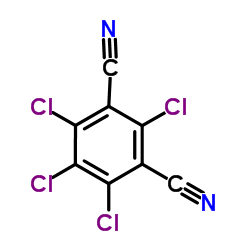
Chlorothalonil structure
|
Common Name | Chlorothalonil | ||
|---|---|---|---|---|
| CAS Number | 1897-45-6 | Molecular Weight | 265.911 | |
| Density | 1.7±0.1 g/cm3 | Boiling Point | 350.5±37.0 °C at 760 mmHg | |
| Molecular Formula | C8Cl4N2 | Melting Point | 250-251ºC | |
| MSDS | Chinese USA | Flash Point | 153.8±20.7 °C | |
| Symbol |




GHS05, GHS06, GHS08, GHS09 |
Signal Word | Danger | |
Use of ChlorothalonilChlorothalonil is a broad spectrum fungicide and is effective in protecting plants against fungal diseases caused mainly by Phytophthora infestans and Alternaria solani. Chlorothalonil is used for controlling of fungal foliar diseases of vegetables and crops[1][2]. |
| Name | chlorothalonil |
|---|---|
| Synonym | More Synonyms |
| Description | Chlorothalonil is a broad spectrum fungicide and is effective in protecting plants against fungal diseases caused mainly by Phytophthora infestans and Alternaria solani. Chlorothalonil is used for controlling of fungal foliar diseases of vegetables and crops[1][2]. |
|---|---|
| Related Catalog | |
| References |
| Density | 1.7±0.1 g/cm3 |
|---|---|
| Boiling Point | 350.5±37.0 °C at 760 mmHg |
| Melting Point | 250-251ºC |
| Molecular Formula | C8Cl4N2 |
| Molecular Weight | 265.911 |
| Flash Point | 153.8±20.7 °C |
| Exact Mass | 263.881561 |
| PSA | 47.58000 |
| LogP | 2.88 |
| Vapour Pressure | 0.0±0.8 mmHg at 25°C |
| Index of Refraction | 1.633 |
CHEMICAL IDENTIFICATION
HEALTH HAZARD DATAACUTE TOXICITY DATA
MUTATION DATA
|
| Symbol |




GHS05, GHS06, GHS08, GHS09 |
|---|---|
| Signal Word | Danger |
| Hazard Statements | H317-H318-H330-H335-H351-H410 |
| Precautionary Statements | P260-P273-P280-P284-P304 + P340 + P310 |
| Personal Protective Equipment | Eyeshields;Faceshields;full-face respirator (US);Gloves;multi-purpose combination respirator cartridge (US);type ABEK (EN14387) respirator filter |
| Hazard Codes | T+;N |
| Risk Phrases | R26;R37;R40;R41;R43;R50/53 |
| Safety Phrases | S28-S36/37/39-S45-S60-S61-S36/37-S26 |
| RIDADR | 3276 |
| RTECS | NT2600000 |
| Packaging Group | I |
| Hazard Class | 6.1(a) |
| HS Code | 2926909090 |
| HS Code | 2926909038 |
|---|---|
| Summary | HS: 2926909038 fenoxanil Educational tariff:17.0% Tax rebate rate:9.0% Regulatory conditions:S(Registration certificate of import and export) Lowest tariff:6.5% General tariff:30.0% |
|
Effects of seven antifouling compounds on photosynthesis and inorganic carbon use in sugar kelp Saccharina latissima (Linnaeus).
Arch. Environ. Contam. Toxicol. 63(3) , 365-77, (2012) Macroalgae depend on carbon-concentrating mechanisms (CCMs) to maintain a high photosynthetic activity under conditions of low carbon dioxide (CO(2)) availability. Because such conditions are prevalen... |
|
|
Development and validation of one-step ultrasound-assisted extraction for simultaneous determination of multiclass fungicides in soils.
J. AOAC Int. 98(1) , 192-200, (2015) A rapid, efficient, and simple one-step ultrasound-assisted extraction (UAE) method was developed for the analysis of seven fungicides (cymoxanil, metalaxyl, mandipropamid, folpet, chlorothalonil, kre... |
|
|
Photoreduction of chlorothalonil fungicide on plant leaf models.
Environ. Sci. Technol. 45(22) , 9582-9, (2011) Photodegradation is seldom considered at the surface of vegetation after crop spraying. Chlorothalonil, a broad-spectrum foliar fungicide with a very widespread use worldwide, was considered. To repre... |
| meta-TCPN |
| 2,4,5,6-Tetrachloroisophthalonitrile |
| Chloroalonil |
| MFCD00045594 |
| 2,4-Dicyanotetrachlorobenzene |
| 1,3-dicyano-2,4,5,6-tetrachlorobenzene |
| 2,4,5,6-tetrachlorobenzene-1,3-dicarbonitrile |
| 2,4,5,6-tetrachloro-1,3-benzenedicarbonitrile |
| m-Tcpn |
| 2,4,5,6-tetrachloro-1,3-dicyanobenzene |
| Nopcocide |
| TPN |
| Perchloroisophthalonitrile |
| 2,4,5,6-tetrachloroisophthalodinitrile |
| Chlorothalonil |
| EINECS 217-588-1 |
| tetrachloroisophthalonitrile |
| Bravo |
| Daconil |
| 1,3-Benzenedicarbonitrile, 2,4,5,6-tetrachloro- |
| Tetrachloroisophthalodinitrile |
| 1,3-dicyanotetrachlorobenzene |
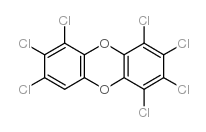 CAS#:35822-46-9
CAS#:35822-46-9 CAS#:1746-01-6
CAS#:1746-01-6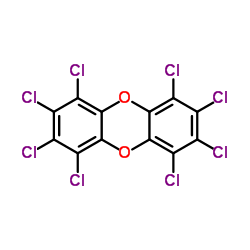 CAS#:3268-87-9
CAS#:3268-87-9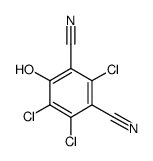 CAS#:28343-61-5
CAS#:28343-61-5 CAS#:1786-86-3
CAS#:1786-86-3 CAS#:115044-73-0
CAS#:115044-73-0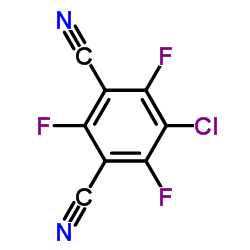 CAS#:1897-50-3
CAS#:1897-50-3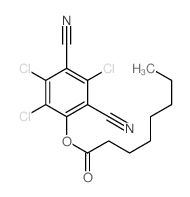 CAS#:67205-41-8
CAS#:67205-41-8
